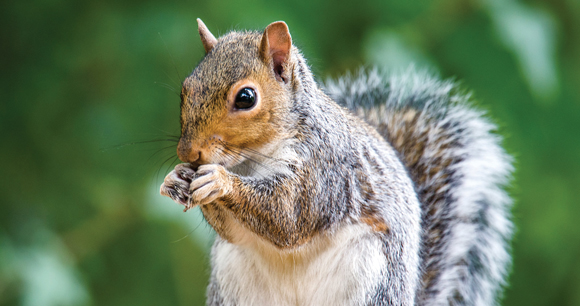In the United Kingdom, gray squirrels are an exotic species, first introduced in the 1870s. While the gray squirrel population has grown to an estimated 2.7 million, native red squirrels have declined from a reported high of 3.5 million to approximately 120,000 today—due to habitat loss and fragmentation, excessive hunting in the 1800s and early 1900s, competition from the larger gray squirrels, and unfamiliar diseases contracted from the grays. To protect red squirrels and woodlands, gray squirrels have been subject to lethal control for decades. Most are shot while others are trapped and then killed by bludgeoning them to death.

Immunocontraception, however, may soon be employed to humanely control gray squirrels in the country. One way of doing this involves placing contraceptive-laced baits in species-specific traps or hoppers. Research conducted by the UK’s Animal Plant Health Agency indicates that only four days of baiting is sufficient to treat over 90 percent of gray squirrels in a given woodlot. Because gray squirrels are larger and stronger than red squirrels, a heavier trap door will be used to prevent red squirrels and other nontarget species from accessing the bait.
A study in Ecological Modelling recently found that short-term culling followed by contraceptive use is the most cost-effective means of rapidly reducing gray squirrel numbers. According to the UK Squirrel Accord, however, contraception can be used to control gray squirrel numbers without culling, but would take longer.